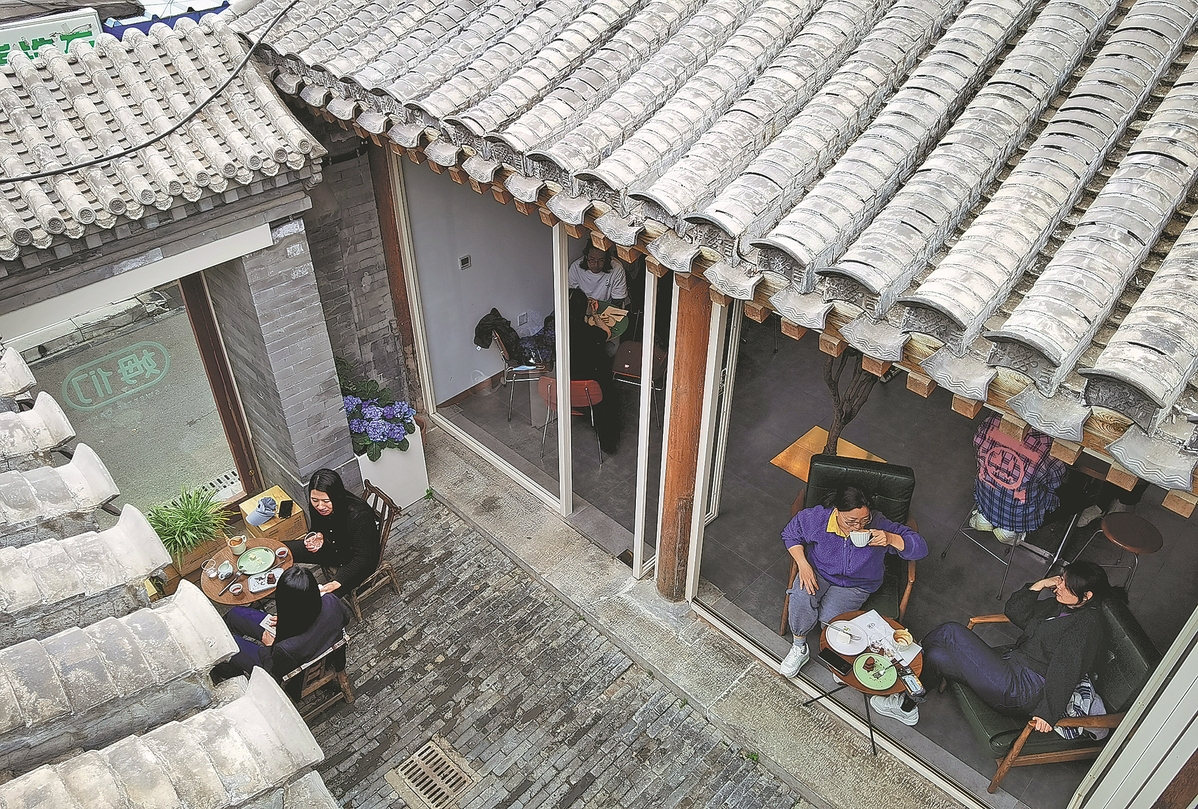More treasures garner global recognition
Chinese sites' inclusion on UNESCO list adds new luster to human civilizations


Tom Wolters, a Dutch landscape architect who has been living in Beijing for over 20 years in a traditional courtyard house, or siheyuan, near the former imperial city, said the inscription of the Beijing Central Axis on the World Heritage List did not come as a surprise to him.
Wolters and his family fell in love with Beijing when he got the chance to work as a co-director of a China-European Union cooperation project in 2001. Three years after they arrived, they decided to settle down in the city with a history of over 3,000 years.
He said when they moved to the courtyard house, their Chinese friends asked why they choose to live there instead of buying a nice villa in the suburbs, which was the trend at the time.
"We were so lucky to find a traditional courtyard house (siheyuan). We liked it so much," Wolters said.
He also witnessed the impressive upgrading of the old Beijing city over the years.
"Many courtyard houses are saved, protected and preserved, and the historic streetscape of hutong (alleyway) has been restored by demolishing illegal structures, such as added floors and rooms, and there is strict control of building regulations," he said.
Running north to south through the heart of historical Beijing, the Central Axis consists of former imperial palaces and gardens, ancient sacrificial structures, and ceremonial and public buildings. Together they bear testimony to the evolution of the city and exhibit evidence of the imperial dynastic system and urban planning traditions of China.
On July 27, the United Nations Educational, Scientific and Cultural Organization announced the inclusion of the Beijing Central Axis: A Building Ensemble Exhibiting the Ideal Order of the Chinese Capital, on its World Heritage List during the 46th session of the UNESCO World Heritage Committee held in New Delhi, India.
A day earlier, it was also announced during the session that two Chinese natural heritage sites, located in the Inner Mongolia autonomous region and Shandong province, were included on the World Heritage List.
Saying that cultural and natural heritage are the country's treasures, President Xi Jinping has called for efforts to take this UNESCO inclusion as an opportunity to better protect, preserve and make use of them so as to renew their glamour in the new era.
The inclusion of these heritage items has positive significance for the building of Chinese modernization that features material and cultural-ethical advancement and harmony between humanity and nature, Xi said, noting that it also adds new luster to world civilizations.
Ten years ago, when Xi made his first visit to the UNESCO headquarters in Paris, he explained his vision of "diverse, equal, and inclusive" civilizations for the first time.
In his speech, Xi mentioned the Terracotta Warriors known by many people and expressed heartfelt thanks to UNESCO for its contribution to the preservation and dissemination of Chinese civilization.
"In 1987, this national treasure of China, shrouded in secrecy for over 2,000 years, was put on the UNESCO World Cultural Heritage List. There are many more proud Chinese achievements that have been included in the World Cultural Heritage List, the World Intangible Cultural Heritage List and the Memory of the World List," he said.
Xi always attaches great importance to the protection and inheritance of cultural and natural heritage and has promoted the protection of several world heritage sites, even in the early days of his political career.
The Wuyi Mountains, which were added to the World Heritage List for their cultural and natural value in 1999, are an example of how Xi urged local authorities to prioritize ecological conservation over economic benefit when he served as deputy secretary of the Communist Party of China Fujian Provincial Committee.
During a fact-finding trip to the Wuyi Mountains in 1998, Xi cited the example of Hawaii, which made use of its superior natural environment to develop tourism instead of developing fishing and farming, thus becoming a world-renowned tourist destination.
It is crucial to protect the natural ecosystem of the Wuyi Mountains as it is a major issue that relates to its future and destiny, Xi said.
Now millions of visitors from China and abroad visit the famous summer resort every year to enjoy the beautiful landscape.
With the latest inclusion last month, bringing the total number of World Heritage sites in China to 59, the country is now home to 14 world natural heritage sites and four heritage sites noted for both cultural and natural features, both leading the world in terms of quantity.
Important outcome
Over the years, President Xi has said on multiple occasions that the world's cultural and natural heritage is an important outcome of the development of human civilization and natural evolution, and an important vehicle for exchanges and mutual learning between civilizations.
"To well protect, inherit and make good use of these precious treasures is our shared responsibility, and is of vital importance to the continuity of human civilization and the sustainable development of the world," he said in a congratulatory letter to the extended 44th session of the World Heritage Committee in 2021.
Lyu Zhou, director of Tsinghua University's National Heritage Center, said that the process of applying for World Heritage status is a process of social communication, helping people understand the heritage, which is the root of the Chinese nation.
Lyu said the discussion at the 46th session of the World Heritage Committee on the inscription of the Beijing Central Axis as a World Heritage Site "reflects the importance of promoting global understanding of Chinese civilization".
"The inclusion of the Beijing Central Axis itself is a successful example of cultural exchange and mutual learning," he said.
World heritage affairs have become an important area for China to participate in global governance, promote cultural exchange and fulfill its international obligations as a signatory to the Convention Concerning the Protection of the World Cultural and Natural Heritage, he added.
Wolters, the Dutch architect, said he and his family regularly invite friends and guests to their home and walk in the hutong with them. "But they always say that the most interesting part is to sit with us in the yard and hear about our life in a siheyuan."
"I am sure that the inscription as a World Heritage Site will also have a positive effect on further protection of the imperial city where we live, and the other hutong along the axis, and further stimulate the growth of cultural tourism," he said.
Cheng Yuezhu contributed to this story.
- Tibetan antelope 'kindergarten' in China's Hoh Xil rescues 10 calves
- Ministry issues targeted flood warnings across China
- Shanghai promotes green transformation with NEVs
- China improves health services for elderly unable to care for themselves
- Three missing in fishing boat accident in Fujian
- China to host commemoration for NPC's affiliation to IPU




































